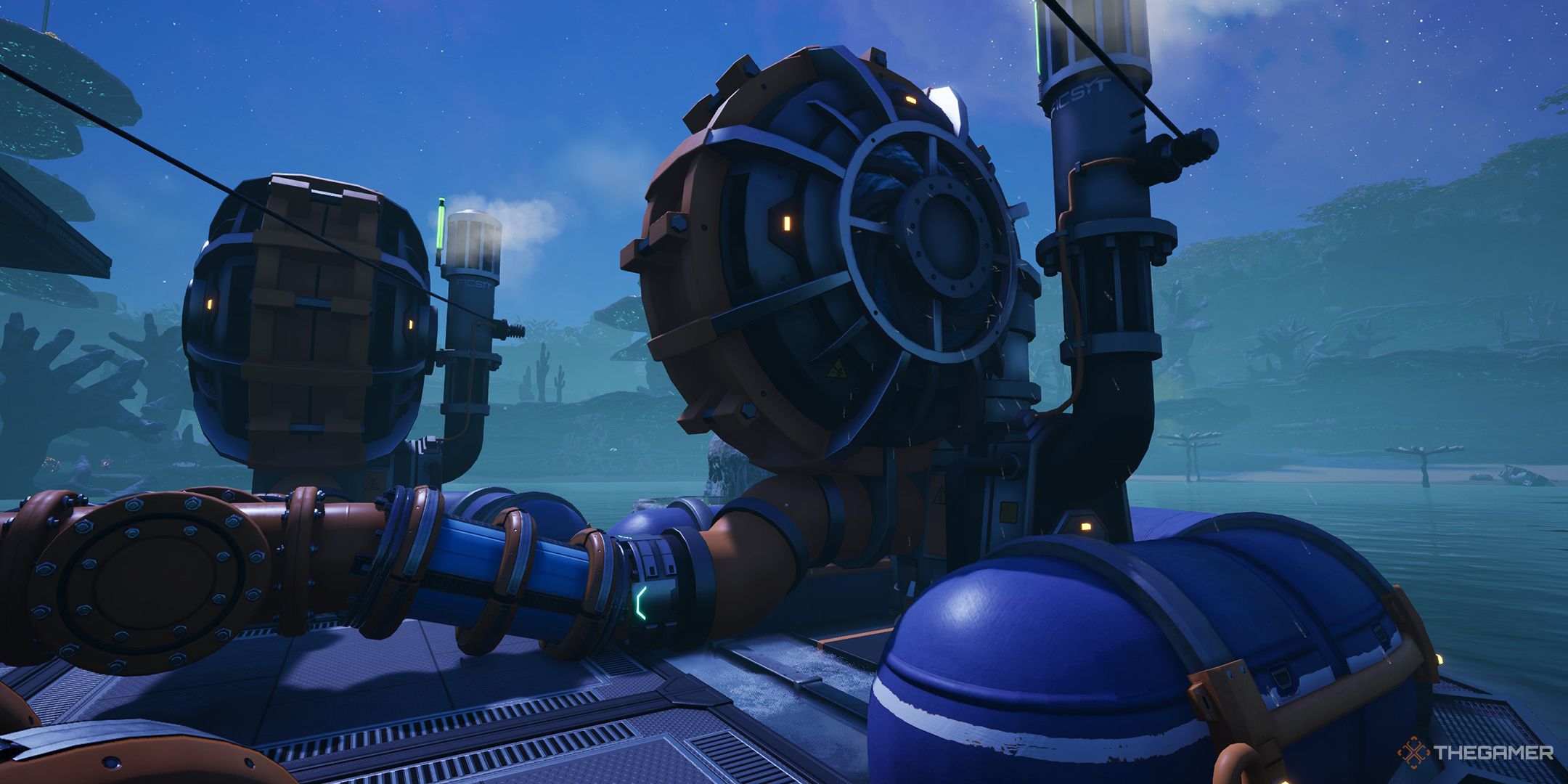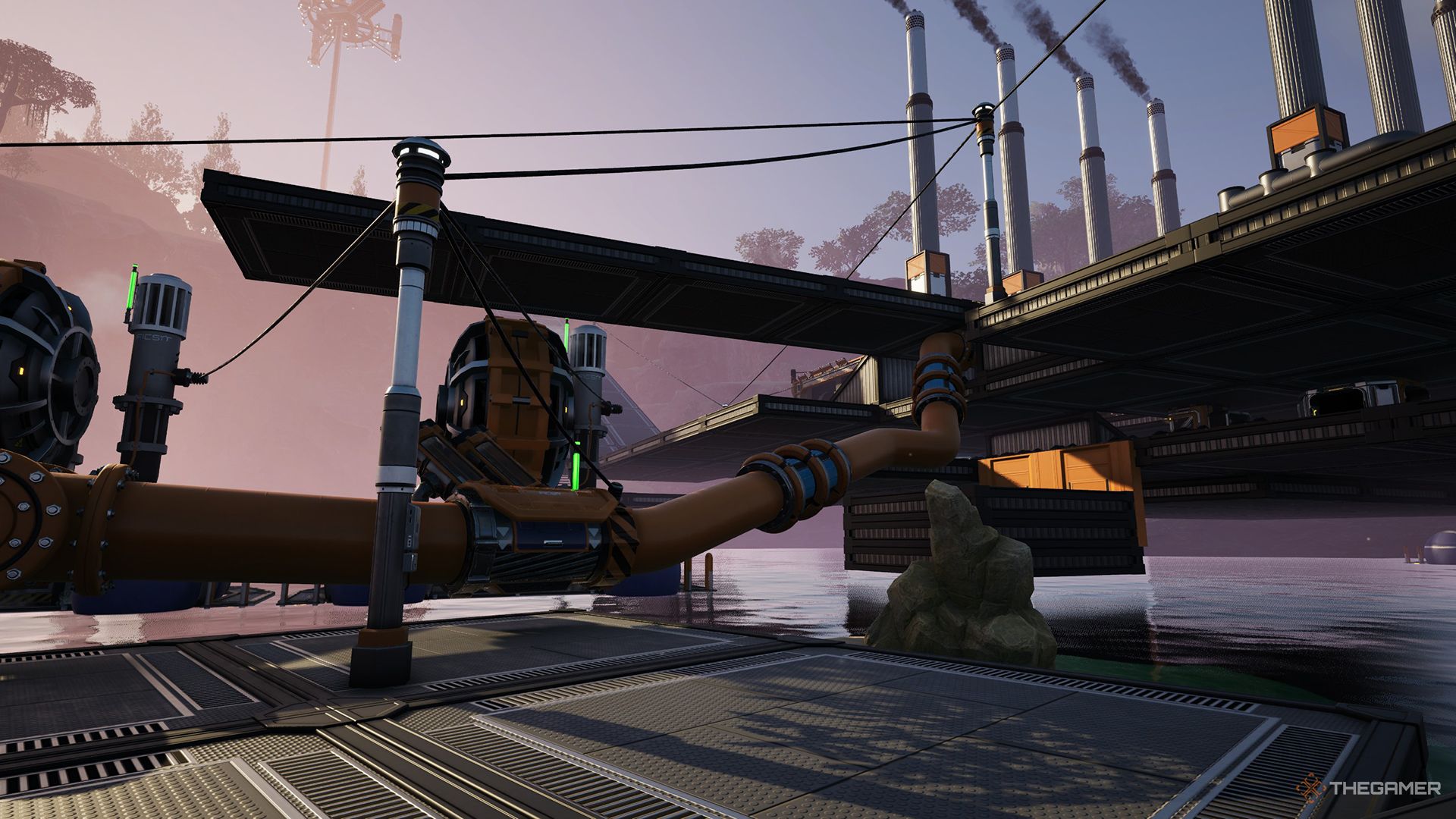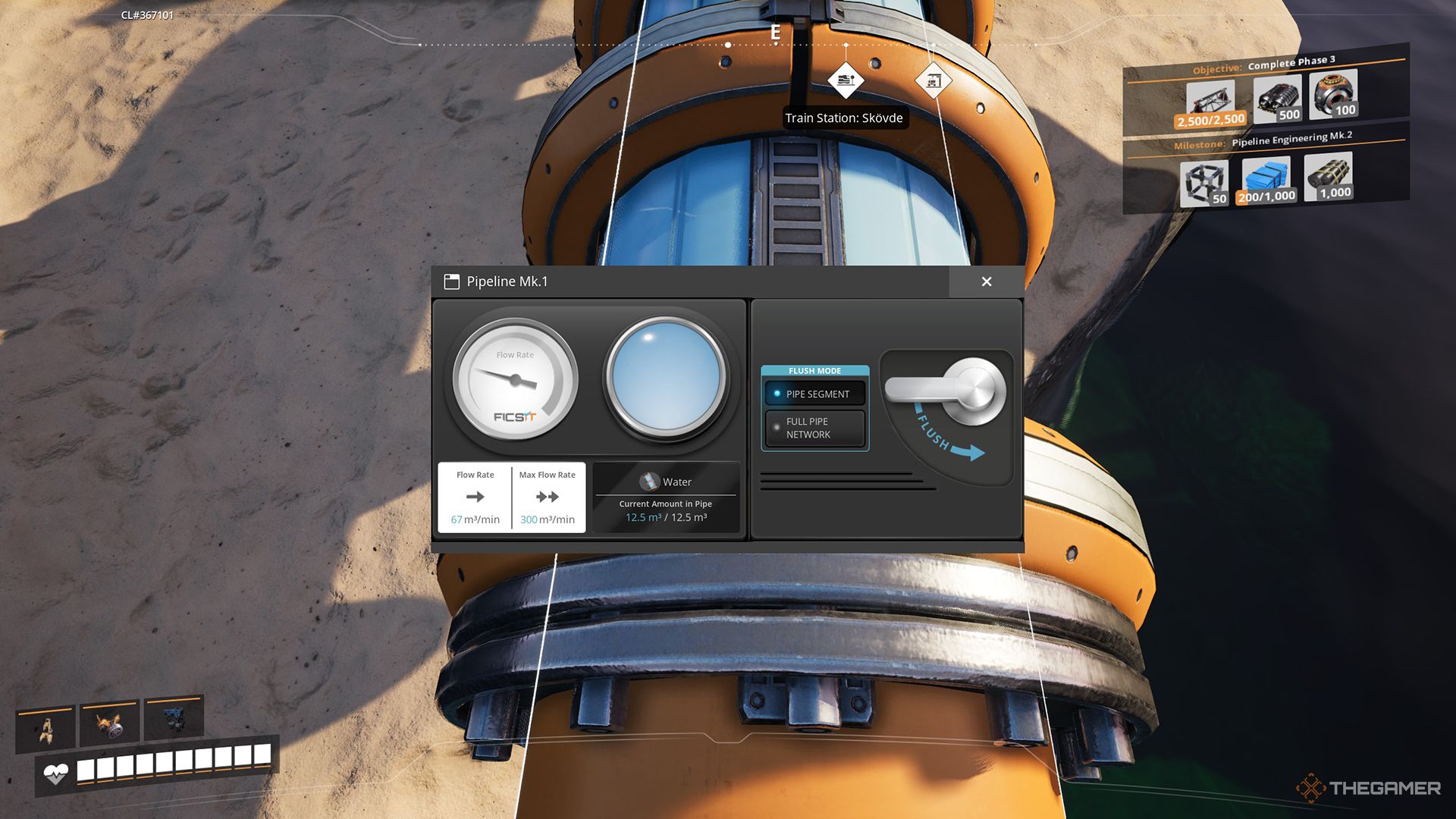There are dozens of different resources satisfactoryall waiting for you to start digging them up. Using the natural beauty of an alien planet, you can transform it into a utopia of efficiency with machines, conveyor belts, trains and more covering the planet's surface.
One type of important resource you'll discover early on is liquids. They're very different from the usual solids you've dealt with so far, and the efficient production and handling of liquids can be confusing at first. Below, we'll cover everything you need to know about fluids in general at Satisfactory.
Basics of liquids
Fluids represent a category of resources in Satisfactory that function differently than solid objects. One of the biggest differences between liquids and solids is the way they are transported. While solid objects use conveyor belts, liquids must be transported through pipes, which have a different set of rules, which we'll cover below.
You cannot put liquids in your inventory until you pack them first.
Raising the head
Because of gravity, liquids cannot move very far vertically on their own. The Water Extractor, for example, has a head lift of 10 meters, meaning it can pump water up to 10 meters before it can no longer move. If you need water to go higher, you will need to use a Pipeline pump.
Nitrogen does not require a head lift to flow upwards
because it is gas.
When feeding, a pipeline pump can provide an additional 20 meters of head liftallowing the fluid in the pipe to move up to another 20 meters vertically. Line pumps can be combined to lift liquid higher than this, but a second pump must be present located at the end of the 20-meter lift of the first pump to maximize vertical distance.
Pipeline pumps do not affect the flow, so they
cannot be used to increase fluid velocity
tube journey.
Flow rate
Fluid flow rate is is determined by how much liquid is currently in the pipe. As the pipe fills, the pressure inside will increase and thus the velocity of the fluid flow will increase as it is pushed into the next pipe segment. The flow rate will increase or decrease as machines along the pipeline use the fluid or as it moves further down the line.
Liquid will always try
align at the original starting point
. This means that liquid flowing through the U-shaped pipe from the upper left corner will flow to the upper right corner without the need for a pipeline pump.
The same concept applies when using a Pipeline assembly divide the fluid flow. A Pipeline Junction is essentially both a conveyor belt splitter and a confluence, but for fluid. Fluids passing through a piping assembly will divide evenly on all connected sidesleveling out where possible.
With this you don't have to worry about balancing the amount of fluid going through each pipe as it will always try to distribute evenly across all pipes. This means you really only need to focus on getting the right amount of fluid for the machines you use.
Let's say you have eight coal-fired generators, each of which requires 45 cubic meters of water per minute to operate. In total, you would need to provide 360 cubic meters of water per minute to provide enough for each generator. Since water extractors produce 120 cubic meters of water per minute, you need exactly three to provide enough.
However, since the Mk.1 pipe consumption is only 300, you it is impossible for all this water to go into one pipeotherwise you will lose the part. To fix this, you will need to place one water extractor on the other end of the pipe. This makes it so that all 360 cubic meters of water are in the pipes, but not all flowing in one place (the “inlet” of the pipeline).
Valves allow limit pipeline flow. Using our previous example, this could be useful if instead you have Mk.2 pipes that flow 600 cc, but only need 360 cc. You can use a valve at the beginning of the pipeline to limit how much water can enter the next segment, allowing the rest of the water to be used elsewhere.
After all, you are it is not really necessary to focus on optimizing the flow rate of the pipe. As long as there is enough fluid in the pipeline for each connected machine, the rate at which it flows is not essential.



